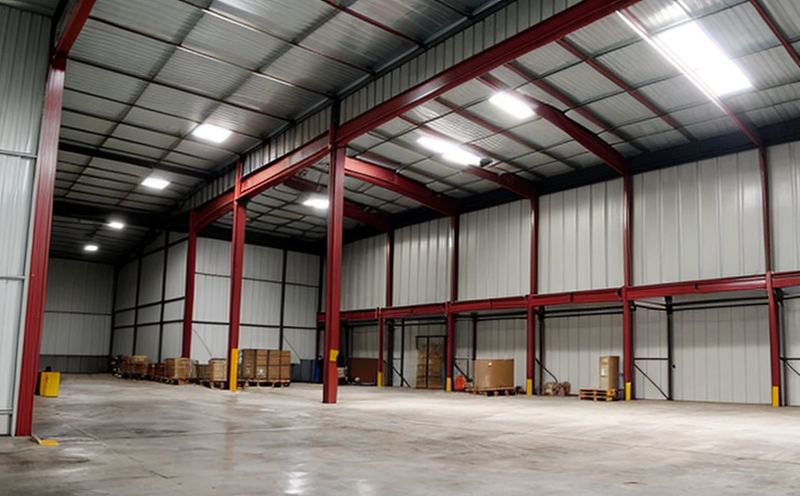Warehouse structural integrity inspection
The importance of a robust and reliable warehouse cannot be overstated. Warehouses serve as critical hubs for storing goods, facilitating logistics, and ensuring timely delivery to end consumers. Ensuring the structural integrity of these facilities is paramount for safety, operational efficiency, and compliance with regulatory standards.
Warehouse structural integrity inspection involves evaluating various aspects of a building's structure to ensure it can withstand the stresses imposed by its intended use. This includes assessing load-bearing walls, columns, beams, floors, roofs, and connections between structural elements. The primary goal is to identify potential weaknesses or vulnerabilities that could lead to accidents or operational disruptions.
Structural integrity inspections are essential for several reasons:
- To comply with local building codes and regulations
- To prevent accidents or collapses that could endanger workers, customers, and the public
- To ensure optimal use of space within the warehouse
- To extend the lifecycle of the facility by identifying issues early
- To reduce insurance premiums through demonstrated compliance and proactive maintenance
- To maintain a safe working environment for employees
- To avoid costly repairs or replacements that could arise from neglecting regular inspections
Regular inspections help in maintaining high standards of safety, which is crucial for businesses operating within the warehouse sector. By focusing on structural integrity, organizations can ensure their facilities meet both current and future needs.
The inspection process typically involves a thorough examination using various tools and techniques to assess different components of the structure. These may include visual inspections, load testing, non-destructive testing (NDT), and other specialized equipment. The aim is to provide detailed reports that outline any deficiencies found during the assessment.
| Component | Description |
|---|---|
| Load-bearing walls | Evaluation of load-bearing capacity and stability |
| Columns | Assessment of vertical support structures' integrity |
| Birds | Inspection for structural weaknesses or damage |
| Floors | Evaluation of load distribution and surface condition |
The findings from these inspections are crucial in ensuring that warehouses meet the necessary safety standards. Proper documentation and follow-up actions based on inspection results can significantly enhance operational efficiency and reduce risks associated with structural failures.
Scope and Methodology
| Methodology | Description |
|---|---|
| Visual Inspection | A detailed examination of the warehouse's exterior and interior to identify visible defects or damages. |
| Load Testing | Evaluation of structural elements under simulated or actual load conditions. |
| Non-Destructive Testing (NDT) | Use of various techniques such as ultrasonic testing, radiography, and eddy current to detect internal flaws without causing damage. |
| Instrumentation | Utilization of specialized equipment like strain gauges, displacement meters, and temperature sensors for precise measurements. |
The scope of a warehouse structural integrity inspection encompasses several key areas:
- Evaluation of the building's foundation to ensure stability and support
- Inspection of all load-bearing structures including walls, columns, beams, and floors
- Assessment of roof trusses and their connections
- Detailed examination of structural joints and fasteners
- Checking for any signs of water infiltration or moisture damage
- Evaluation of the overall condition of the building envelope
- Review of past inspection records to identify trends or recurring issues
The methodology employed in these inspections ensures comprehensive coverage, allowing for accurate identification and documentation of all relevant structural aspects. This approach not only helps in identifying current problems but also aids in predicting potential future issues.
Why Choose This Test
- Regulatory Compliance: Ensures adherence to local building codes and standards, minimizing legal risks.
- Safety: Protects workers and the public from accidents or collapses by identifying potential hazards early.
- Economic Benefits: Reduces costs associated with premature failures through timely interventions.
- Operational Efficiency: Ensures smooth operations within the warehouse, minimizing downtime due to structural issues.
- Increased Property Value: Demonstrates commitment to maintaining high-quality facilities, enhancing property value and attractiveness for potential buyers or tenants.
- Insurance Premiums: Lower insurance costs through documented compliance with safety regulations and proactive maintenance practices.
The warehouse structural integrity inspection is a vital component of any comprehensive facility management strategy. By investing in regular inspections, businesses can ensure they are meeting industry best practices while also safeguarding their investments against unforeseen risks.
Quality and Reliability Assurance
- Accurate Data Collection: Use of precise measurement tools ensures reliable data for analysis.
- Standardized Procedures: Adherence to internationally recognized standards such as ISO, ASTM, and EN guarantees consistent quality.
- Comprehensive Reporting: Detailed reports provide clear insights into the condition of the warehouse structure, facilitating informed decision-making.
- Independent Verification: Involvement of third-party inspectors ensures objective assessment without bias.
The inspection process is designed to uphold high standards of quality and reliability. By following established protocols and using advanced technologies, we ensure that every aspect of the warehouse's structural integrity is thoroughly evaluated. This commitment to excellence helps in maintaining trust and confidence among all stakeholders involved.
| Quality Assurance Measures | Description |
|---|---|
| Regular Audits | Periodic reviews to ensure continuous compliance with quality standards. |
| Precision Instruments | Use of state-of-the-art equipment for accurate measurements and assessments. |
| Training Programs | Ongoing training for inspectors ensures they are up-to-date with latest techniques and technologies. |
| Independent Review | Involvement of external experts to provide unbiased second opinions on findings. |
Our dedication to quality assurance is reflected in our unwavering commitment to providing accurate, reliable results. Through rigorous adherence to established procedures and continuous improvement efforts, we strive to deliver the highest level of service possible.





